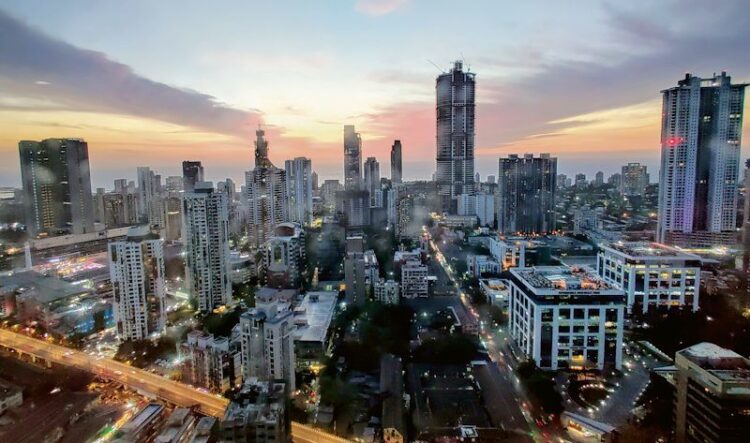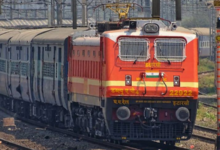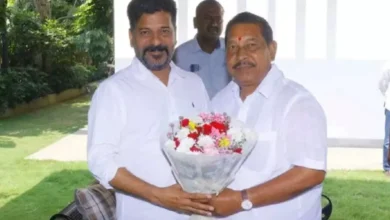The political economy of India is a rollercoaster
LET ME prove YOU you first: in 1998, the Congress ceased to exist as a national party. If it was because it represented regional ambitions that it rose to power in 2004 and then solidified its grasp five years later,.

We need to do a few thought experiments in order to fully comprehend this. Assume that in 2004, Chandrababu Naidu and the BJP, his party’s partner, had been able to maintain their majority in Andhra Pradesh. After that, the BJP would have gained 145 seats, the NDA would have gained 220 seats, and the Congress would have fallen to become the second-largest party in India with 121 seats.
Imagine for a moment if, in 2004, the BJP had chosen to remain in alliance with the DMK rather than Jayalalithaa’s party. As it happened, the NDA paid a heavy price for choosing to change friends in Tamil Nadu: The DMK-Congress coalition won all 39 of the state’s seats because the AIADMK was very unpopular. There was a possibility that the NDA would have won the whole state if the BJP had managed to hang onto the DMK.
In a span of ten years, Andhra Pradesh and Tamil Nadu significantly altered the trajectory of Indian politics. Atal Bihari Vajpayee would have come back to power and the NDA would have won 239 seats overall if they had hung onto it. The Congress would have lost 10 members, or as many as 112, compared to its 1999 total, and its fall may have been accelerated by ten years.
Why did I choose these two states in the South? They provide valuable insight into how India’s political economy altered throughout the post-liberalization era and impacted the fortunes of the country’s oldest political party. This was largely due to the emergence of new entrepreneurial groupings that had previously been unable to gain traction under the “licence quota Raj.”
Journalist for the economy Harish Damodaran has documented the shift in the demographics of “India’s New Capitalists” and shown how new caste-communities were able to overcome the old commercial groups’ monopolistic hold starting in the mid-1990s. Every one of these so-called “new capitalists” originated in their respective states’ internal marketplaces. The Andhra capitalists, or the Kamma, Reddy, and Raju businessmen, who had first acquired their fortune in small businesses before moving into infrastructure development under Chandrababu’s administration, were in the lead.
A segment of Andhra Pradesh’s business elite threw in their lot with YS Rajasekhara Reddy (YSR) in 2004, when he stormed to power and handed the Congress its greatest ever number of Members of Parliament. During UPA-1, Andhra Inc. grew to become the largest infrastructure and power company, acquiring firms like as GMR, GVK, Lanco, IVRCL, and Gayatri Projects. The rumor in the corridors of power back then was that YSR’s influence in New Delhi was shown by the ascent of Andhra Pradesh’s titans of industry.
Though less dramatic, Tamil entrepreneurs have made a considerable impact. Despite the overtly left-wing political rhetoric of the major Dravidian parties, Tamil Nadu is acknowledged as one of India’s most business-friendly states. The state was named the most reform-oriented in a 1996 National Council of Applied Economic Research assessment.
According to research by John Harris and Andrew Wyatt, Tamil Nadu’s consecutive administrations have supported a private sector-led growth model, ensuring a stable two-party political system. The ‘national’ parties rely solely on the resources that the DMK or AIADMK are prepared to provide for them.
If not for the enormous financial bubble that began to form globally in the early 2000s, the new “regional” capitalists who arose in the late 1990s would not have been able to compete with the established mercantile-industrial caste-communities. New business owners in India now have access to PSU bank financing, in part due to their increasing influence within the political establishment.
However, the 2005–2008 stock market boom also made it possible for them to obtain public funds. This resulted in an irrational credit-fueled investment bubble in steel, electricity, and infrastructure, which crashed when values collapsed due to the global financial crisis of 2008–09. These businesses, which relied more on their market capitalization than actual profits, were abruptly unable to obtain the money they needed to continue operating. The outcome was the massive bank loans that went bad, which became known as India’s NPA (non-performing assets) crisis.
Many of the largest “new capitalists” collapsed by 2011–12 due to overwhelming debt. Banks seized their holdings and sold them to large corporations with stable earnings and substantial cash reserves. As a consequence, almost every sector saw a significant consolidation.
As businesses collapsed all around them, babus and bankers who had approved projects or given big loans came under scrutiny. The bureaucratic-managerial class’s answer was to retreat within themselves, refusing to accelerate project financing or clean files. This was dubbed “policy paralysis” by the media. Coincidentally, big business started to acquire holdings in media businesses during this period, further consolidating its power over the news media.
In addition, the “new capitalist” balloon that had threatened to overtake “old” capital in the 2000s broke due to the pricking of the credit bubble. Since the 2010s, monopoly capital—large conglomerates—have a greater and greater hold over the Indian economy, mirroring the Zaibatsus and Chaebols of Asian capitalist powers.
Was it possible for the Congress to ride this wave? It had strong linkages to established corporate establishments dating back to the era of the “licence quota Raj,” after all. This is where the difference in leadership was felt. Rahul Gandhi was naturally viewed with suspicion by India’s capitalist elite due to his reputation as an anti-business and pro-poor figure.
On the other hand, Narendra Modi was able to effectively present himself as a leader who is business-friendly. Business magnates like as Anil Ambani and Sunil Bharti Mittal had said in January 2009 that Modi has the necessary skills to govern the country. India Inc. made the choice to support Modi, and it hasn’t looked back.






